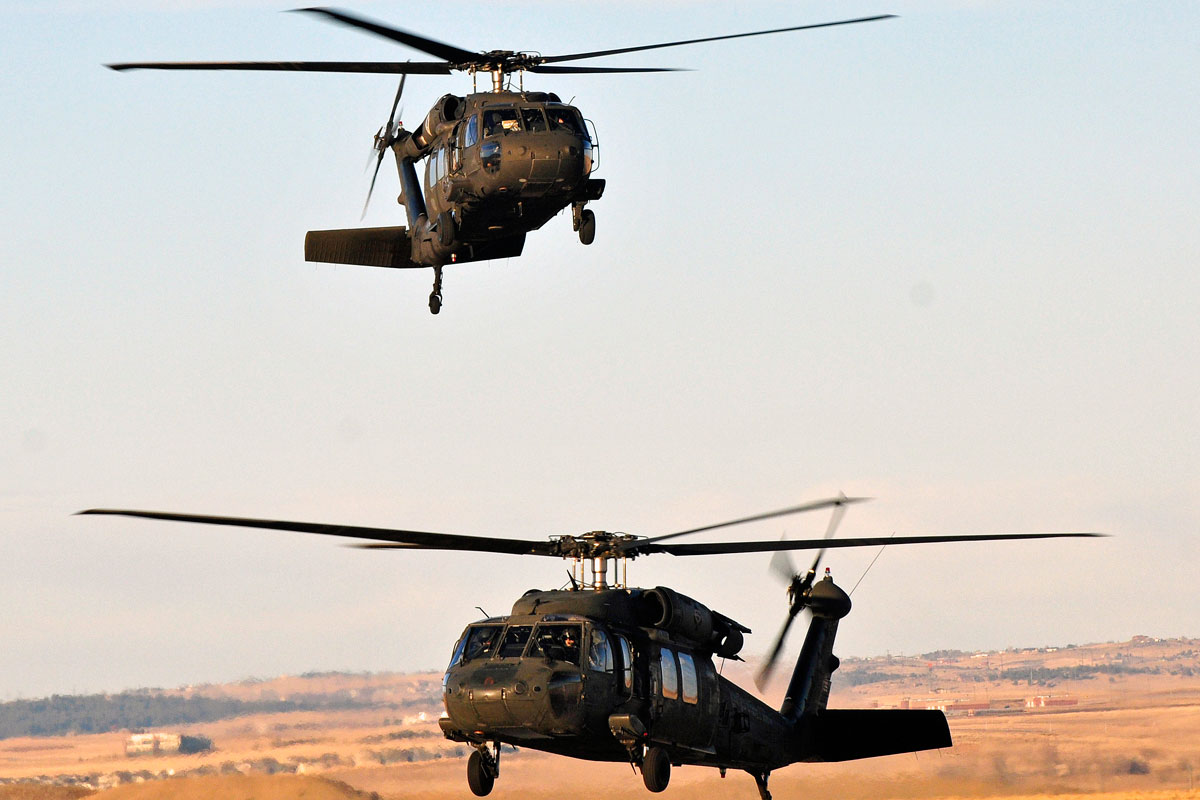Expert Insights: Enhancing Efficiency in UH 60 Helicopter Procedures
Expert Insights: Enhancing Efficiency in UH 60 Helicopter Procedures
Blog Article
Understanding the Mechanics and Design Behind Uh 60 Helicopters
The UH-60 helicopter, commonly called the Black Hawk, stands as a pinnacle of modern-day rotorcraft modern technology, personifying a mix of robust design and elaborate mechanics. From its inception to its present iterations, the advancement of this aircraft showcases a combination of development and practicality. As we peel back the layers of the UH-60's design, a world of intricate systems and meticulous design emerges. Understanding the auto mechanics and engineering behind this versatile airplane reveals a world where accuracy meets power, and where each part plays a vital duty in achieving trip.
Background of UH-60 Helicopters
The history of UH-60 helicopters traces back to the late 1970s when the USA Military sought a versatile and innovative energy helicopter to change its aging fleet. In response to this need, the Sikorsky Aircraft Company established the UH-60 Black Hawk helicopter. Introduced in 1979, the UH-60 rapidly became a staple in military operations because of its impressive capabilities.
The UH-60 was designed to stand out in a range of missions, including army transportation, clinical emptying, electronic war, and unique procedures. Its capacity to adapt to various roles made it a useful asset to the U.S. uh 60. Military and various other military pressures around the world
Throughout the years, the UH-60 system has undergone several upgrades and variations to improve its efficiency and maintain rate with advancing goal needs. These helicopters have actually seen considerable solution in disputes such as the Gulf Battle, Afghanistan, and Iraq, showcasing their dependability and adaptability in varied operational settings. The UH-60's rich history is a testimony to its long-lasting legacy as a top energy helicopter.

Engine and Power Equipments
Using innovative propulsion technology, UH-60 helicopters are outfitted with innovative engine and power systems to make sure optimum efficiency and dependability in a range of functional situations. The UH-60, frequently recognized as the Black Hawk, is powered by two General Electric T700-GE-701D engines, each with the ability of supplying up to 1,940 shaft horse power. These turboshaft engines supply the necessary thrust for the helicopter to execute its missions successfully, including army transportation, clinical emptying, and combat support.

Rotor System and Aerodynamics
Just how do the rotor system and aerodynamics of UH-60 helicopters add to their functional performance and flight capabilities? The blades system of the UH-60 helicopter plays an important duty these details in supplying lift and propulsion. The UH-60 includes a four-bladed, totally articulated rotor system that permits high maneuverability and stability throughout flight. This style makes it possible for the helicopter to perform a variety of missions, from transport and clinical evacuation to deal with procedures.
Aerodynamics additionally play a crucial function in the efficiency of UH-60 helicopters. The structured body and rotor blade layout decrease drag, allowing the helicopter to achieve higher speeds and much better gas effectiveness. The wind resistant style of the UH-60 also adds to its capacity to operate in varied environmental problems, consisting of high altitudes and hot temperature levels.
Avionics and Flight Control Equipment

In its complex sychronisation with the rotor system and aerodynamics of UH-60 helicopters, the avionics and flight control systems create a critical network of technologies forming the airplane's operational capacities. In the UH-60, these systems consist of digital screens, interaction radios, General practitioner navigating, weather radar, and autopilot systems.
The trip control systems of the UH-60 are accountable for equating the pilot's inputs into the appropriate modifications to the rotor system, guaranteeing stable trip and maneuverability. These systems are composed of hydraulic actuators, servos, and computers that collaborate to regulate the main and tail blades, as well as various other flight control surfaces. By exactly taking care of the helicopter's flight dynamics, these systems enable pilots to carry out a wide variety of goals, from transportation and search-and-rescue to deal with procedures, with precision and self-confidence.
Role and Applications in Aviation
Avionics systems in UH-60 helicopters include an array of digital systems that aid in navigation, interaction, tracking, and regulating numerous aircraft features. These systems include digital screens, autopilot systems, communication radios, GPS navigation devices, and weather radar. Additionally, these systems integrate safety and security attributes such as auto-pilot settings, surface understanding warning systems, and stability enhancement systems to improve the total safety and security and operational capabilities of the UH-60 helicopters in different objectives, consisting of army transportation, clinical emptying, search and rescue, and aerial firefighting.
Final Thought
Finally, the UH-60 helicopter is a functional aircraft with an abundant background and progressed design. Its engine and power systems, rotor system, aerodynamics, avionics, and trip control systems all function with each other to make it a efficient and trustworthy maker. The UH-60's function and applications in air travel are huge, varying from military procedures to look and rescue objectives. Its continued growth and use go to my site demonstrate its value in the field of aeronautics (uh 60).
In its detailed sychronisation with the Go Here blades system and the rules of aerodynamics of UH-60 helicopters, the avionics and trip control systems develop a critical network of innovations shaping the aircraft's functional capacities.The trip control systems of the UH-60 are accountable for converting the pilot's inputs into the suitable changes to the rotor system, making sure stable flight and ability to move. Avionics systems in UH-60 helicopters encompass a range of digital systems that aid in navigation, interaction, surveillance, and managing various airplane functions. In addition, these systems incorporate safety and security features such as auto-pilot modes, surface recognition cautioning systems, and security augmentation systems to boost the general safety and security and operational capabilities of the UH-60 helicopters in various missions, consisting of army transport, medical discharge, search and rescue, and aerial firefighting.
Its engine and power systems, rotor system, the rules of aerodynamics, avionics, and trip control systems all work with each other to make it a effective and dependable machine.
Report this page